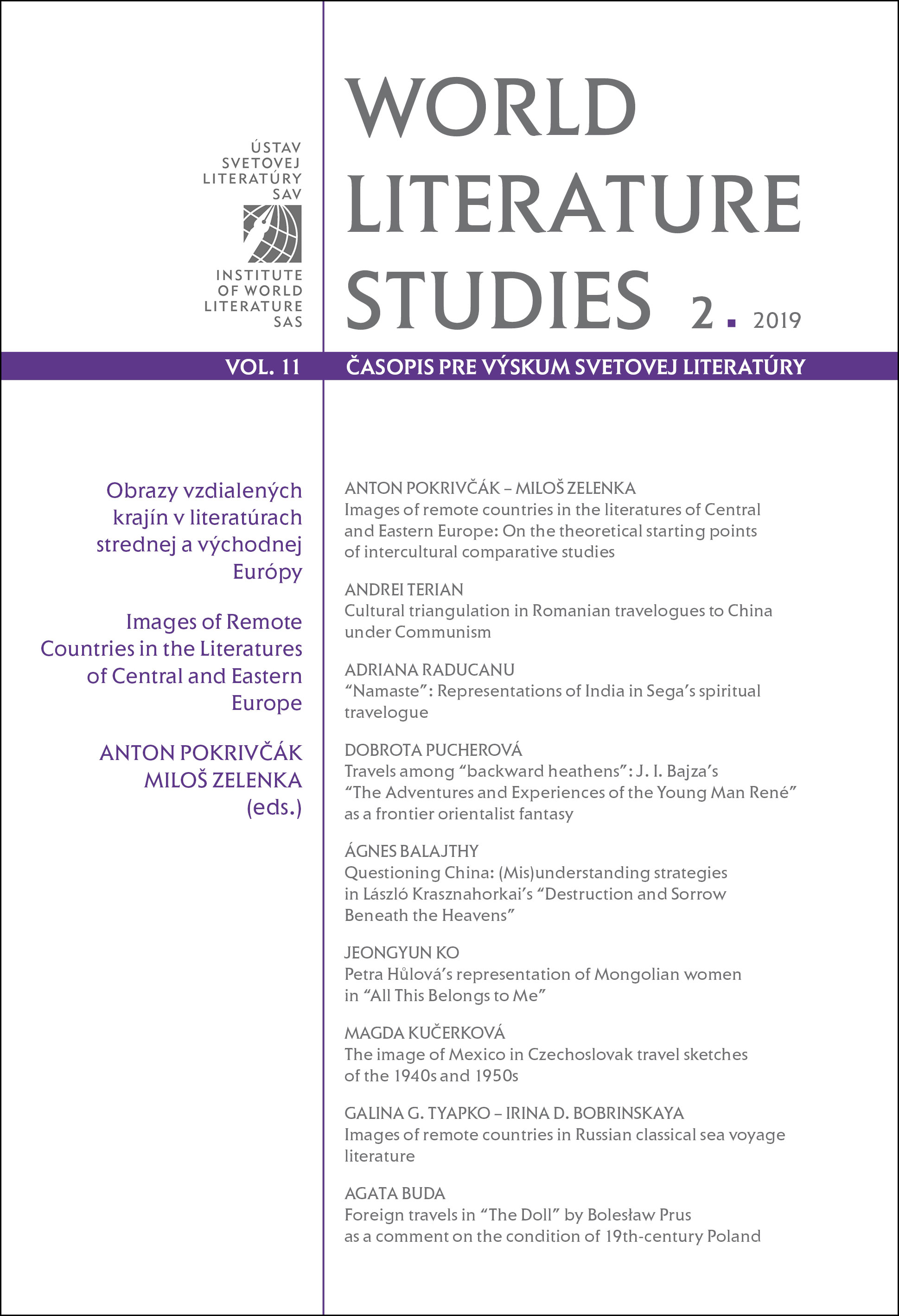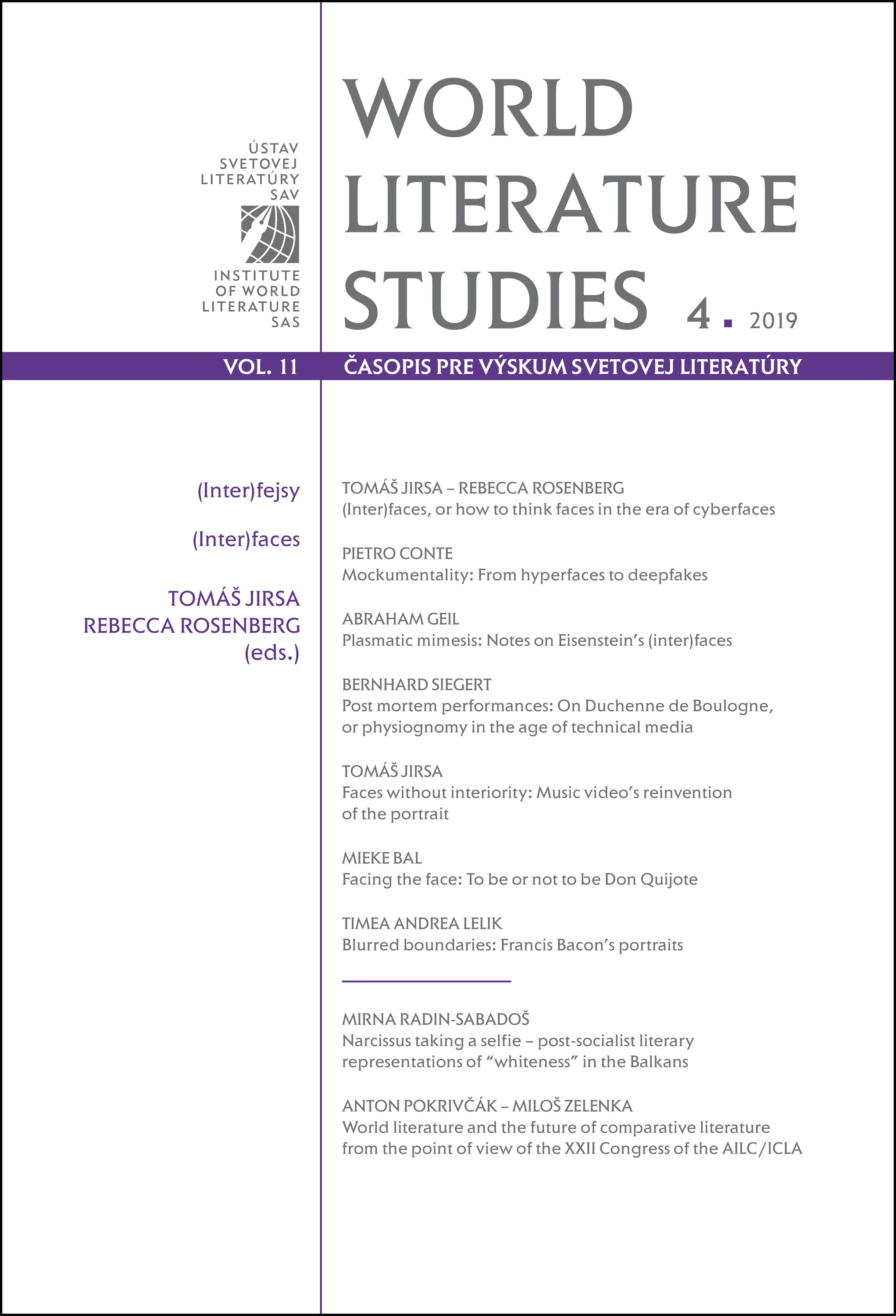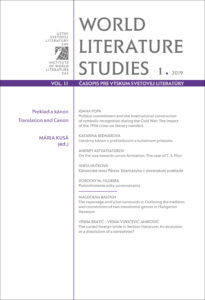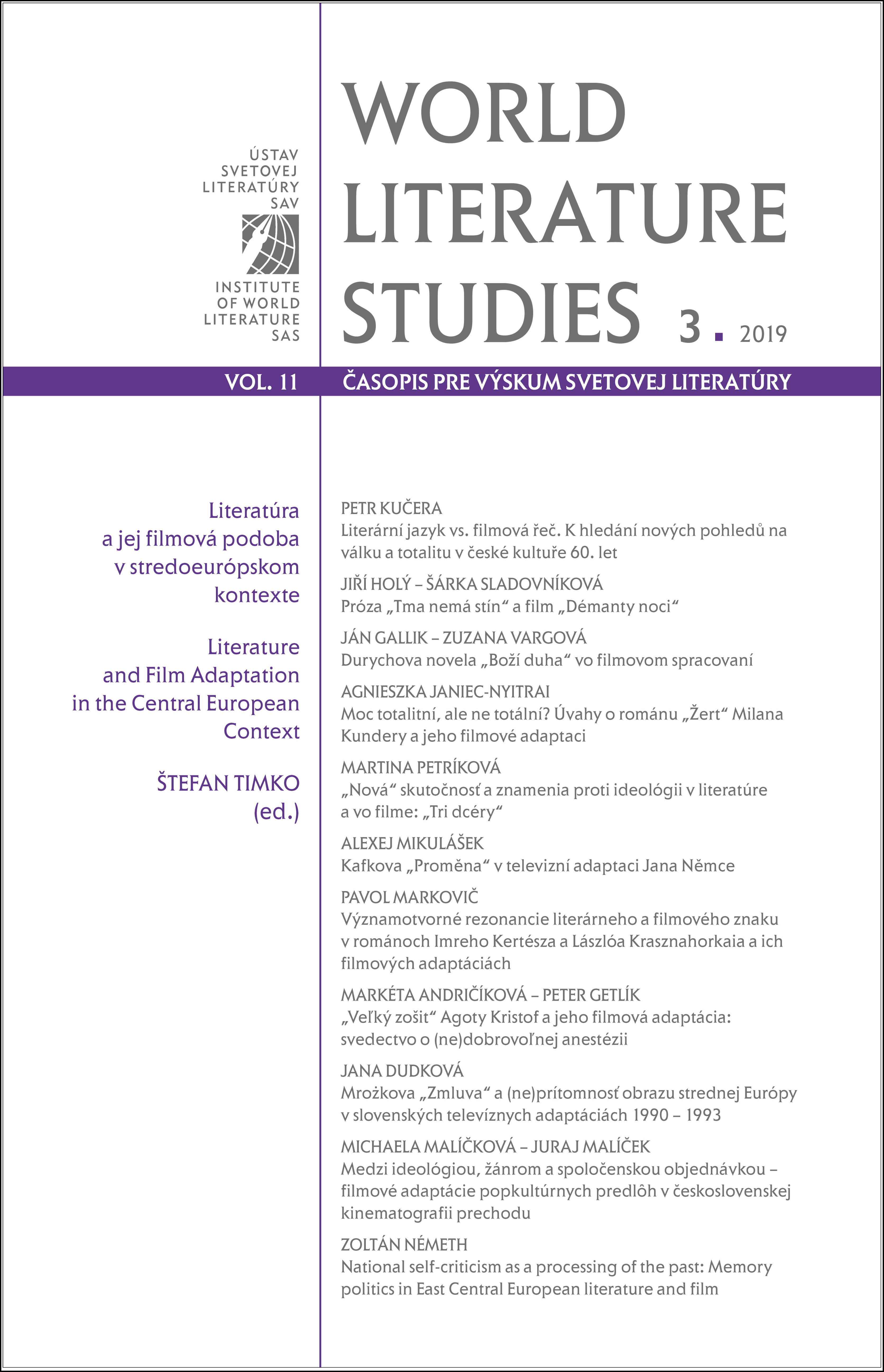-
Translation and Canon
Most scholarly work on the literary canon has focused on the perception of the circumstances, conditions and causes of the constitution and reconstitution of the literary canon within the context of one cultural space. In this issue, we are interested in the factor of “the other”, that enters into play through translations, in particular (but not only) in cultural spaces of the “crossroads” type. The factor of otherness, in its diverse forms and functions, on various levels of perception and reflection of the literary and scholarly text, plays a key role in canonization and recanonization.
Download PDF (WLS_1_2019).
OBSAH / CONTENTS
editoriál / editorial
MÁRIA KUSÁ
Preklad a kánon ■ 2 (go to article)hosťovská prednáška / guest lecture
IOANA POPA
Political commitment and the international construction of symbolic recognition during the Cold War: The impact of the 1956 crises on literary transfers ■ 3 (go to article)štúdie – téma / articles – topic
KATARÍNA BEDNÁROVÁ
Literárny kánon v prekladovom a kultúrnom priestore ■ 15 (go to article)
ANDREY ASTVATSATUROV
On the way towards canon-formation: The case of T. S. Eliot ■ 42 (go to article)
ANITA HUŤKOVÁ
Kánonické texty Pétera Esterházyho v slovenskom preklade ■ 51 (go to article)diskusia / discussion
DOROTHY M. FIGUEIRA
Prehodnotenie etiky porovnávania ■ 70 (go to article)štúdie / articles
MAGDOLNA BALOGH
The reportage and what surrounds it: Outlining the tradition and connections of two transitional genres in Hungarian literature ■ 81 (go to article)
VESNA BRATIĆ – VESNA VUKIĆEVIĆ JANKOVIĆ
The cursed foreign bride in Serbian literature: An evolution or a dissolution of a stereotype? ■ 91 (go to article)recenzie / book reviews
Oľga Kovačičová – Mária Kusá (eds.): Slovník slovenských prekladateľov umeleckej literatúry. 20. storočie. A – K. Slovník slovenských prekladateľov umeleckej literatúry. 20. storočie. L – Ž (Eva Kalivodová) ■ 108(go to article)
Igor Tyšš: Teoretické a materiálové sondy do praxeológie a dejín prekladu americkej literatúry na Slovensku v období socializmu. Mlada tvorba a Beat Generation (Matej Laš) ■ 111(go to article)
Klavdia Smola – Dirk Uffelmann (eds.): Postcolonial Slavic Literatures After Communism (Dobrota Pucherová) ■ 113(go to article)
Gertraude Zand – Stefan Michael Newerkla (eds.): Jezuitská kultura v českých zemích/Jesuitische Kultur in den böhmischen Ländern (Peter Olexák) ■ 117(go to article)
Karolina Ćwiek-Rogalska – Marcin Filipowicz (eds.): Słowiańska pamięć/Slavic Memory (Irena Bilińska) ■ 119(go to article)
Andras Kappanyos: Bajuszbögre, lefordítatlan. Műfordítás – Adaptáció – Kulturális transzfer (Judit Dobry) ■ 123(go to article) -
Images of Remote Countries in the Literatures of Central and Eastern Europe
eds. Anton Pokrivčák – Miloš Zelenka

The study of interliterary relations in Central and Eastern Europe has mostly focused on neighbouring countries. However, in the contemporary globalized world contacts with remote cultures are becoming more frequent in this region as well. The aim of this issue is to analyse how remote countries are depicted in Central and Eastern European literatures and how these countries and cultures are reflected in literary-critical and cultural discourse.
Download PDF (WLS_2_2019).
OBSAH / CONTENTS
EDITORIÁL / EDITORIAL
ANTON POKRIVČÁK – MILOŠ ZELENKA
Images of remote countries in the literatures of Central and Eastern Europe ■ 2 (go to article)ŠTÚDIE / ARTICLES
ANTON POKRIVČÁK – MILOŠ ZELENKA
Images of remote countries in the literatures of Central and Eastern Europe: On the theoretical starting points of intercultural comparative studies ■ 3 (go to article)
ANDREI TERIAN
Cultural triangulation in Romanian travelogues to China under Communism ■ 16 (go to article)
ADRIANA RADUCANU
“Namaste”: Representations of India in Sega’s spiritual travelogue ■ 31 (go to article)
DOBROTA PUCHEROVÁ
Travels among “backward heathens”: J. I. Bajza’s “The Adventures and Experiences of the Young Man René” as a frontier orientalist fantasy ■ 45 (go to article)
ÁGNES BALAJTHY
Questioning China: (Mis)understanding strategies in László Krasznahorkai’s “Destruction and Sorrow Beneath the Heavens” ■ 61 (go to article)
JEONGYUN KO
Petra Hůlová’ s representation of Mongolian women in “All This Belongs to Me” ■ 79 (go to article)
MAGDA KUČERKOVÁ
The image of Mexico in Czechoslovak travel sketches of the 1940s and 1950s ■ 95 (go to article)
GALINA G. TYAPKO – IRINA D. BOBRINSKAYA
Images of remote countries in Russian classical sea voyage literature ■ 111 (go to article)MATERIÁLY / MATERIALS
AGATA BUDA
Foreign travels in “The Doll” by Bolesław Prus as a comment on the condition of 19th-century Poland ■ 123 (go to article)RECENZIE / BOOK REVIEWS
Ernő Kulcsár Szabó – Zoltán Kulcsár-Szabó – Tamás Lénárt (eds.): Verskultúrák. A líraelmélet perspektívái (Péter H. Nagy) ■ 132 (go to article)
Jeffrey R. Di Leo (ed.): American Literature as World Literature (Dobrota Pucherová) ■ 134 (go to article)
Aleida Assmannová: Prostory vzpomínání. Podoby a proměny kulturní paměti (Nataša Hromová Burcinová) ■ 138 (go to article) -
Literature and Film Adaptation in the Central European Context
Research on adaptations of literary works in film and television is usually done in the context of national literature and cinematography. The collection of published studies attempts to give a more comprehensive picture of the audiovisual treatment of literature in the second half of the 20th century in the Czech Republic, Hungary, Poland, and Slovakia. The aim of the issue is to enrich comparative and transmedia research in literature and film, but also to reflect the impact of the geopolitical situation in the Central European region on the thematic preferences of adaptation.
Download PDF (WLS_3_2019).
OBSAH / CONTENTS
EDITORIÁL / EDITORIAL
ŠTEFAN TIMKO
Literatúra a jej filmová podoba v stredoeurópskom kontexte ■ 2 (go to article)ŠTÚDIE / ARTICLES
PETR KUČERA
Literární jazyk vs. filmová řeč. K hledání nových pohledů na válku a totalitu v české kultuře 60. let ■ 5 (go to article)
JIŘÍ HOLÝ – ŠÁRKA SLADOVNÍKOVÁ
Próza „Tma nemá stín“ a film „Démanty noci“ ■ 17 (go to article)
JÁN GALLIK – ZUZANA VARGOVÁ
Durychova novela „Boží duha“ vo filmovom spracovaní ■ 28 (go to article)
AGNIESZKA JANIEC-NYITRAI
Moc totalitní, ale ne totální? Úvahy o románu „Žert“ Milana Kundery a jeho filmové adaptaci ■ 42 (go to article)
MARTINA PETRÍKOVÁ
„Nová“ skutočnosť a znamenia proti ideológii v literatúre a vo filme: „Tri dcéry“ ■ 51 (go to article)
ALEXEJ MIKULÁŠEK
Kafkova „Proměna“ v televizní adaptaci Jana Němce ■ 63 (go to article)
PAVOL MARKOVIČ
Významotvorné rezonancie literárneho a filmového znaku v románoch Imreho Kertésza a Lászlóa Krasznahorkaia a ich filmových adaptáciách ■ 80 (go to article)
MARKÉTA ANDRIČÍKOVÁ – PETER GETLÍK
„Veľký zošit“ Agoty Kristof a jeho filmová adaptácia: svedectvo o (ne)dobrovoľnej anestézii ■ 89 (go to article)
JANA DUDKOVÁ
Mrożkova „Zmluva“ a (ne)prítomnosť obrazu strednej Európy v slovenských televíznych adaptáciách 1990 – 1993 ■ 102 (go to article)
MICHAELA MALÍČKOVÁ – JURAJ MALÍČEK
Medzi ideológiou, žánrom a spoločenskou objednávkou – filmové adaptácie popkultúrnych predlôh v československej kinematografii prechodu ■ 117 (go to article)
ZOLTÁN NÉMETH
National self-criticism as a processing of the past: Memory politics in East Central European literature and film ■ 131 (go to article)RECENZIE / BOOK REVIEWS
Helena Březinová: Slavíci, mořské víly a bolavé zuby. Pohádky Hanse Christiana Andersena: Mezi romantismem a modernitou (Eva Bubnášová) ■ 143 (go to article)
Dan Ringgard – Mads Rosendahl Thomsen (eds.): Danish Literature as World Literature (Miroslav Zumrík) ■ 145 (go to article)
Milan Blahynka: Sedm kapitol o díle Milana Kundery (Alexej Mikulášek) ■ 148 (go to article)
Anna Cetera-Włodarczyk – Alicja Kosim: Polski Szekspir. Repozytorium polskich przekładów Szekspira w XIX wieku: zasoby, strategie tłumaczenia i recepcja (Jana Wild) ■ 151 (go to article)
Geraldine Brodie: The Translator on Stage (Libuša Vajdová) ■ 153 (go to article) -
(Inter)faces
eds. Tomáš Jirsa – Rebecca Rosenberg

How do literature, the visual arts, cinema, and music videos invent and explore the manifold aesthetic, political, and socio-cultural dimensions of the face? What are the ways faces catalyze new modes of aesthetics, society, and sociality in the contemporary moment as well as across technological and posthuman futures? Framed by these questions and situated in both the recent debates around the face in humanities and its contemporary uses in various aesthetic forms and cultural practices, the premise of this issue is to think the face beyond the boundaries of the classical subject and its interiority.
Download PDF (WLS_4_2019).
OBSAH / CONTENTS
EDITORIÁL / EDITORIAL
TOMÁŠ JIRSA – REBECCA ROSENBERG
(Inter)faces, or how to think faces in the era of cyberfaces ■ 2 (go to article)ŠTÚDIE / ARTICLES
PIETRO CONTE
Mockumentality: From hyperfaces to deepfakes ■ 11 (go to article)
ABRAHAM GEIL
Plasmatic mimesis: Notes on Eisenstein’s (inter)faces ■ 26 (go to article)
BERNHARD SIEGERT
Post mortem performances: On Duchenne de Boulogne, or physiognomy in the age of technical media ■ 42 (go to article)
TOMÁŠ JIRSA
Faces without interiority: Music video’s reinvention of the portrait ■ 55 (go to article)
MIEKE BAL
Facing the face: To be or not to be Don Quijote ■ 69 (go to article)
TIMEA ANDREA LELIK
Blurred boundaries: Francis Bacon’s portraits ■ 84 (go to article)ŠTÚDIE / ARTICLES
MIRNA RADIN-SABADOŠ
Narcissus taking a selfie – post-socialist literary representations of “whiteness” in the Balkans ■ 97 (go to article)SPRÁVY / NEWS
ANTON POKRIVČÁK – MILOŠ ZELENKA
World literature and the future of comparative literature from the point of view of the XXII Congress of the AILC/ICLA ■ 111 (go to article)RECENZIE / BOOK REVIEWS
Philip Leonard: Orbital Poetics. Literature, Theory, World (Róbert Gáfrik) ■ 121 (go to article)
Andrea Rizzi – Birgit Lang – Anthony Pym: What is Translation History? A Trust-Based Approach (Natália Rondziková) ■ 122 (go to article)
Magdolna Balogh (ed.): Szomszédok a kirakatban: A szlovák irodalom recepciója Magyarországon 1990 után [Neighbors on Display: The reception of Slovak literature in Hungary after 1990] (Enikő Czucz) ■ 125 (go to article)
Maria Saas – Ștefan Baghiu – Vlad Pojoga (eds.): The Culture of Translation in Romania/ Übersetzungskultur und Literaturübersetzen in Rumänien (Eva Kenderessy) ■ 127 (go to article)






